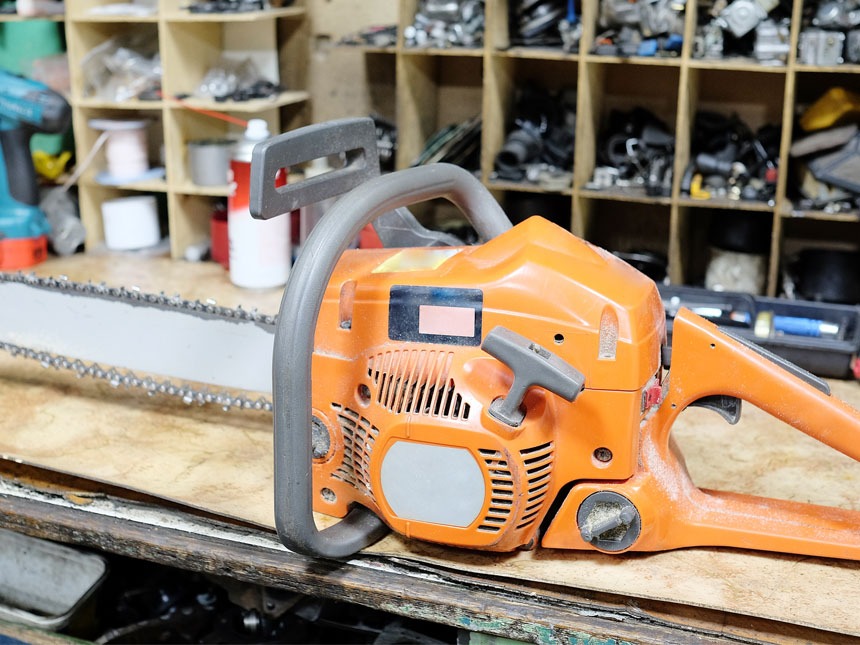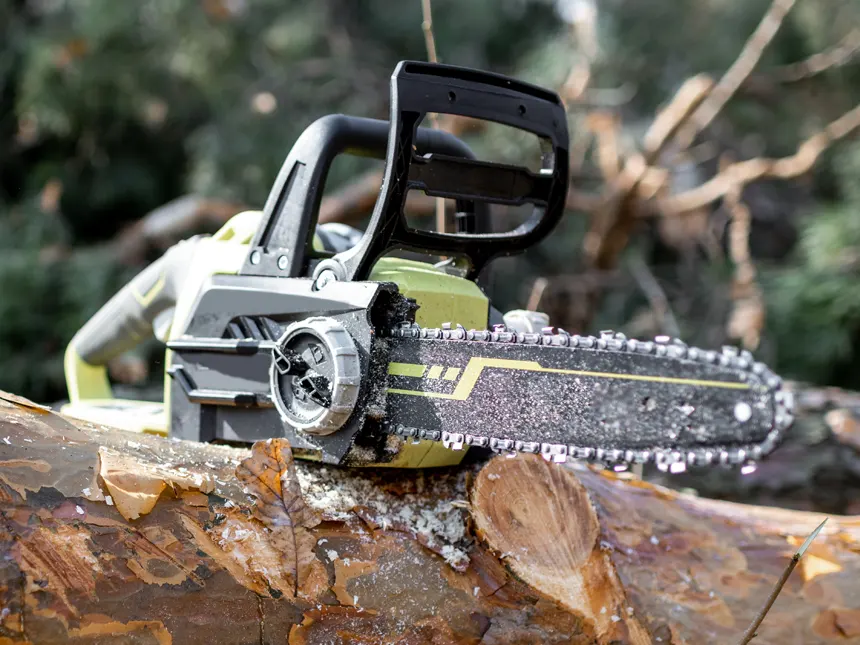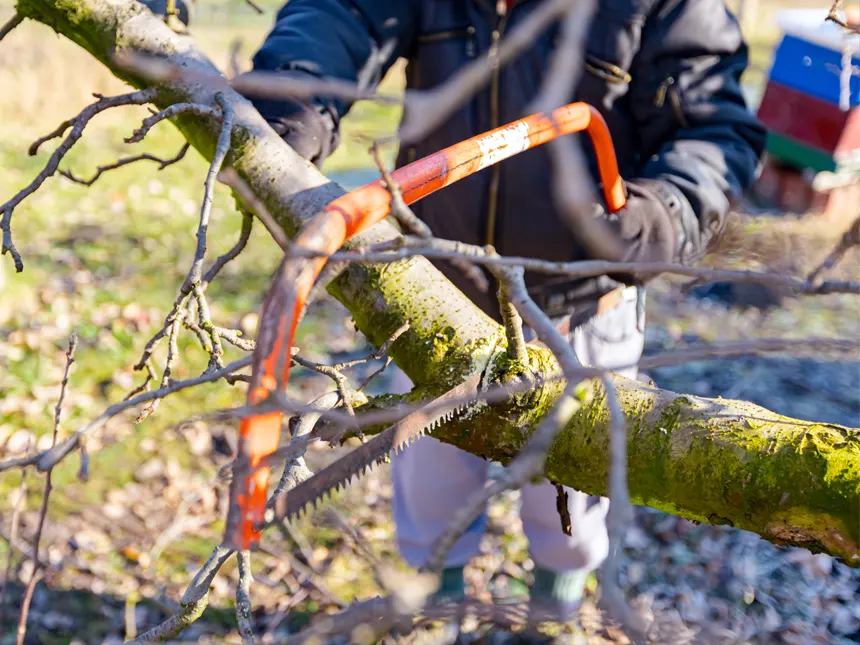Best Oils to Protect Your Axe Head
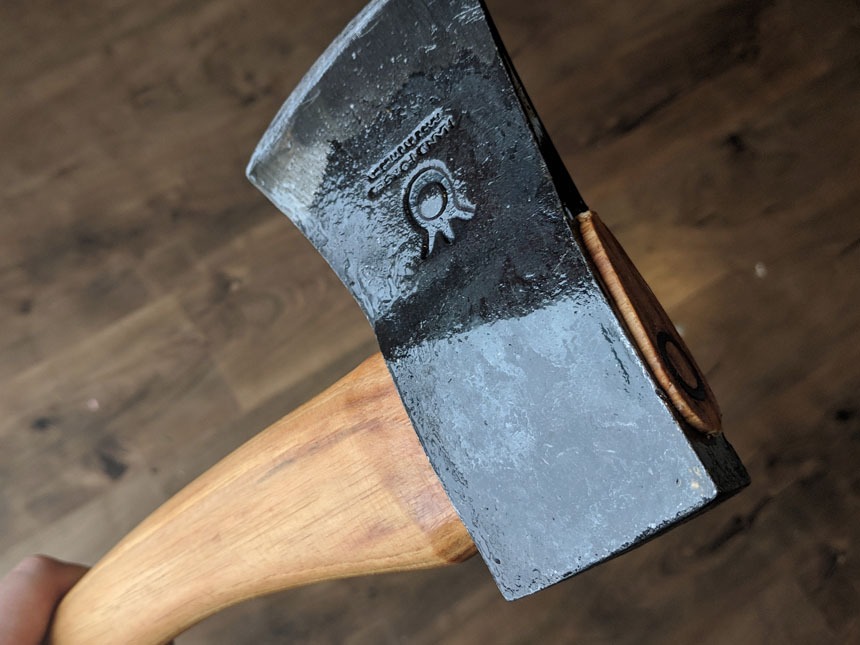
Timber Gadgets is reader-supported. We may earn a commission if you buy through the links on our site.
Taking care of an axe may seem overwhelming at first, especially if you’re new to this. I understand the feeling myself. There was a point in time when I didn’t know either. I had been taught how to use tools but not much about caring for them. I learned the hard way as I got older, how quickly a humid environment and poor storage can coat an axe head in rust.
Take care of your axe and it will last you a long time. That means not throwing it in the dirt, maintaining wooden handles, cleaning, and protecting the head of the axe with oil or wax. That’s what this page is all about; how to protect the head of your axe and which oils are best for the job.
By the way, if you know why we’re using oil and how to store and care for your tools, feel free to skip the next two section to jump straight into the best oil section. Otherwise, I encourage you to read everything because it’s directly related to the well-being of your axe! Also, the short answer is gun oil, vaseline, or beeswax works great for short-term storage while a rust inhibitor like Cosmoline is better for long-term storage.
Why Use Oil in the First Place?
Before we look at which oils are the best, it’s important to know why we’re using oil. What we’re doing is trying to prevent rust. Rust is an iron oxide which forms on steel or iron. It’s a reaction that occurs when iron or steel is exposed to the air and moisture. So what is the culprit here? Moisture. Really, it’s a combination of several factors but to keep things simple, we want to prevent water from touching the steel portion of your axe.
That’s where oil comes in; oil and water don’t mix. Which is why it’s the perfect candidate for protecting the head of your axe from moisture. It’s simple, really, but there is more to it. Depending on the type of oil, you may have to reapply a new coat every few months or more. The environment in which you store your tools makes a difference too.
Where You Store Your Axe Matters…
If you leave your axe laying on the ground in your backyard, it is exposed to all the elements. Moisture in the air (humidity), dew, rain, snow, etc. It won’t take long and your precious cutting tool will be covered in rust. Most people understand this so they opt for storing their tools in their garage. This is about as good as it gets for tools; a stable environment away from rain and shine. Not everyone has a garage to store their tools, though.
Regardless of your circumstances, do your best to keep your axe inside. A garage or shed is great but if you don’t have that option, get a small toolbox and keep it inside your house. You get the point; do what you can to store your tools in a dry environment, out of the sun and rain.
It’s important to ensure your axe is completely dry before putting it into storage. Imagine using your axe in the snow or shortly after a rain. If you don’t dry the head of the axe when you’re finished, it doesn’t matter where you store it; the moisture combined with open air will cause it to rust.
Best Oils for Protecting an Axe Head
I suspect most people reading this page want to store their hatchet over winter. Or perhaps you’re moving and won’t be using it for a year or more. Placing a coat of oil or wax on the head of your axe will keep away the moisture. But which oil is the best for the job? The answer to that question isn’t definitive; it depends on how long you’re storing it and how often you can reapply a coat of oil.
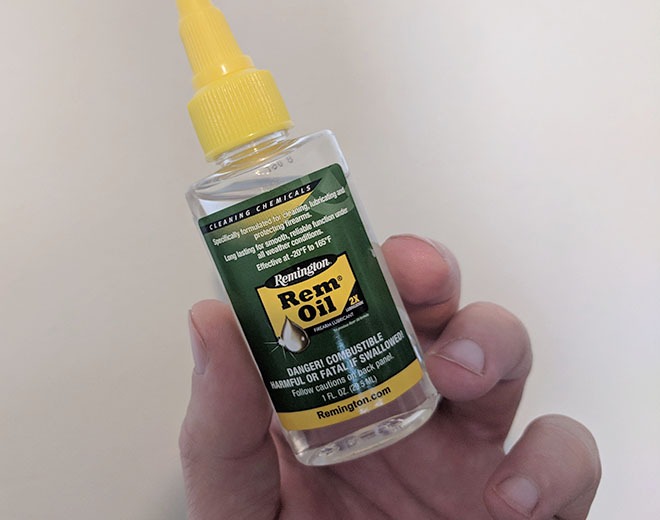
If you just want to store your axe for a few months, coating the steel in gun-oil is a good choice. I remember watching my father clean his guns when I was growing up. He would wipe a rifle with oil (RemOil), slide it into a gun sock, and put it back into the safe. I didn’t know it then but he was protecting the metal from moisture. It’s the same principle. Gun oil works great for several months so long as you’re storing your axe indoors. Here are some other items that work great for short-term.
- WD40
- Beeswax
- 3-in-1 oil
- Vaseline
Now, if you won’t be using your axe for a year or more, you may want to consider using wax. Cosmoline is a petroleum-based rust inhibitor used by Marines during WW2. It has a grease-like viscosity when applied but over a few years it dries and becomes waxy. It’s great for long-term storage although it can be a hassle to remove. Their official website has a guide on how to remove Cosmoline. Again, storing your axe indoors is preferred. Using Cosmoline might be “overkill” but it’s certainly an option.
Prep the Steel & Use the Oil (or Wax)
I recommend cleaning your axe before applying a coat of oil. This can be tricky because water is the enemy – don’t use it. Also, there’s a good choice you have residue on the bit of your axe from chopping wood. To start, take a razor blade or sharp knife to remove the residue. It can be difficult but with a little patience and hard work you can scrape it off.
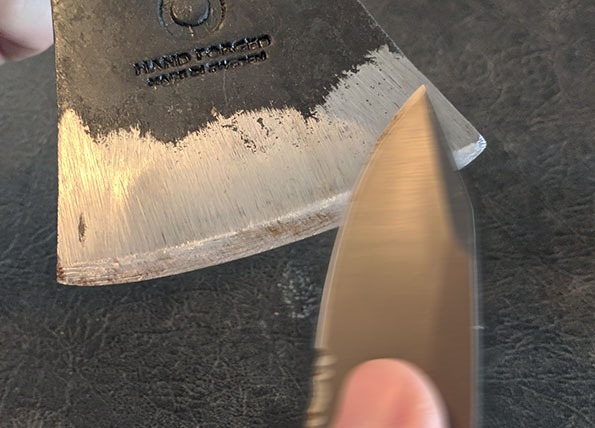
The next part involves removing dirt and even small amounts of moisture trapped on the surface of the steel. Since we can’t use water, use a dry rag and the same oil you’re going to finish with. Vaseline works great for this. Coat the head of your axe with your fingers, doing your best to cover everything – top, bottom, and sides. Once finished, wipe off the oil or vaseline with a dry rag. Doing this once or twice is a good way to clean the steel.
Once the steel is clean, you’re ready to apply a layer of the oil of your choosing. Store the axe in a dry location and remember to reapply additional coats as needed.

